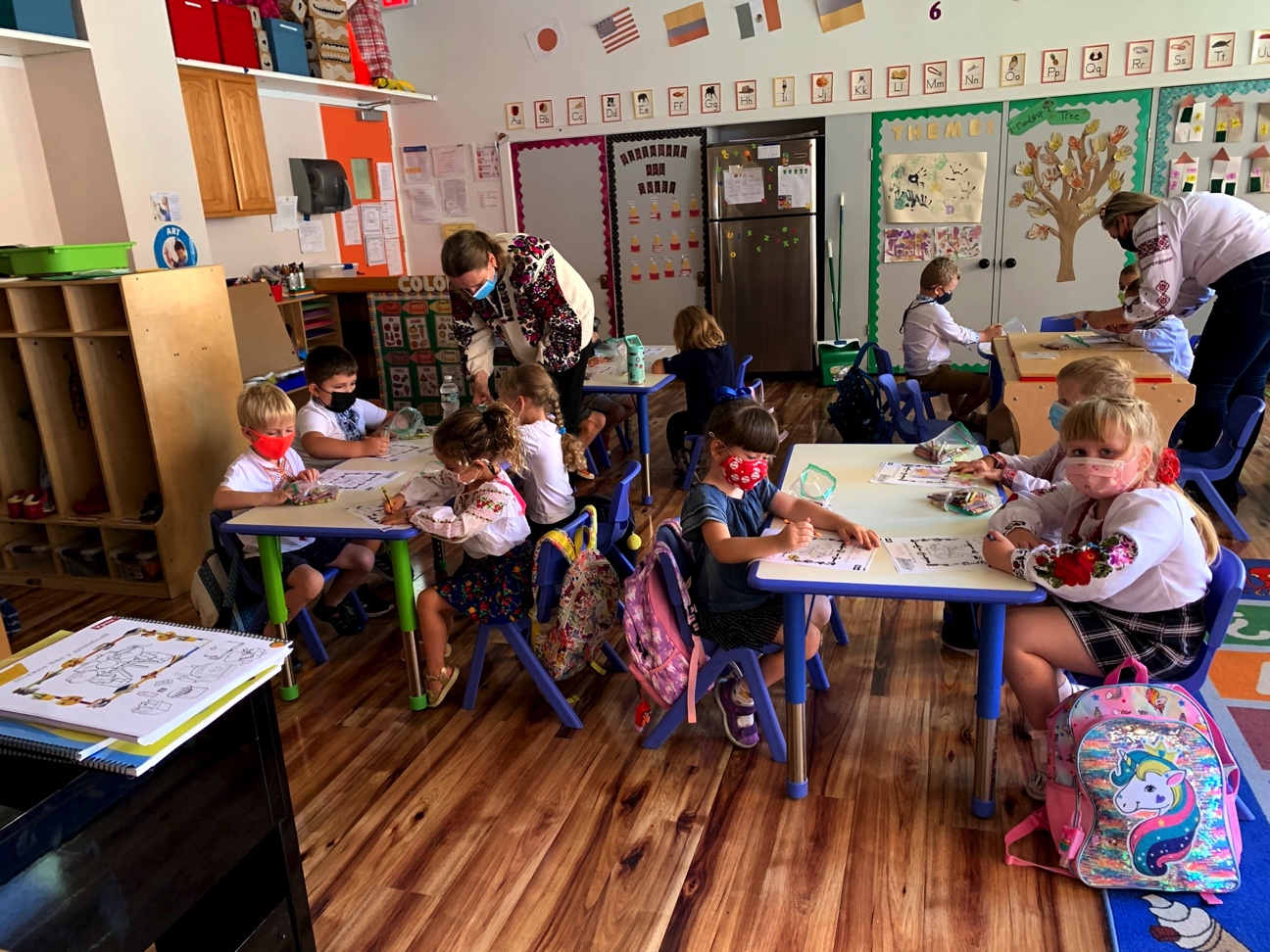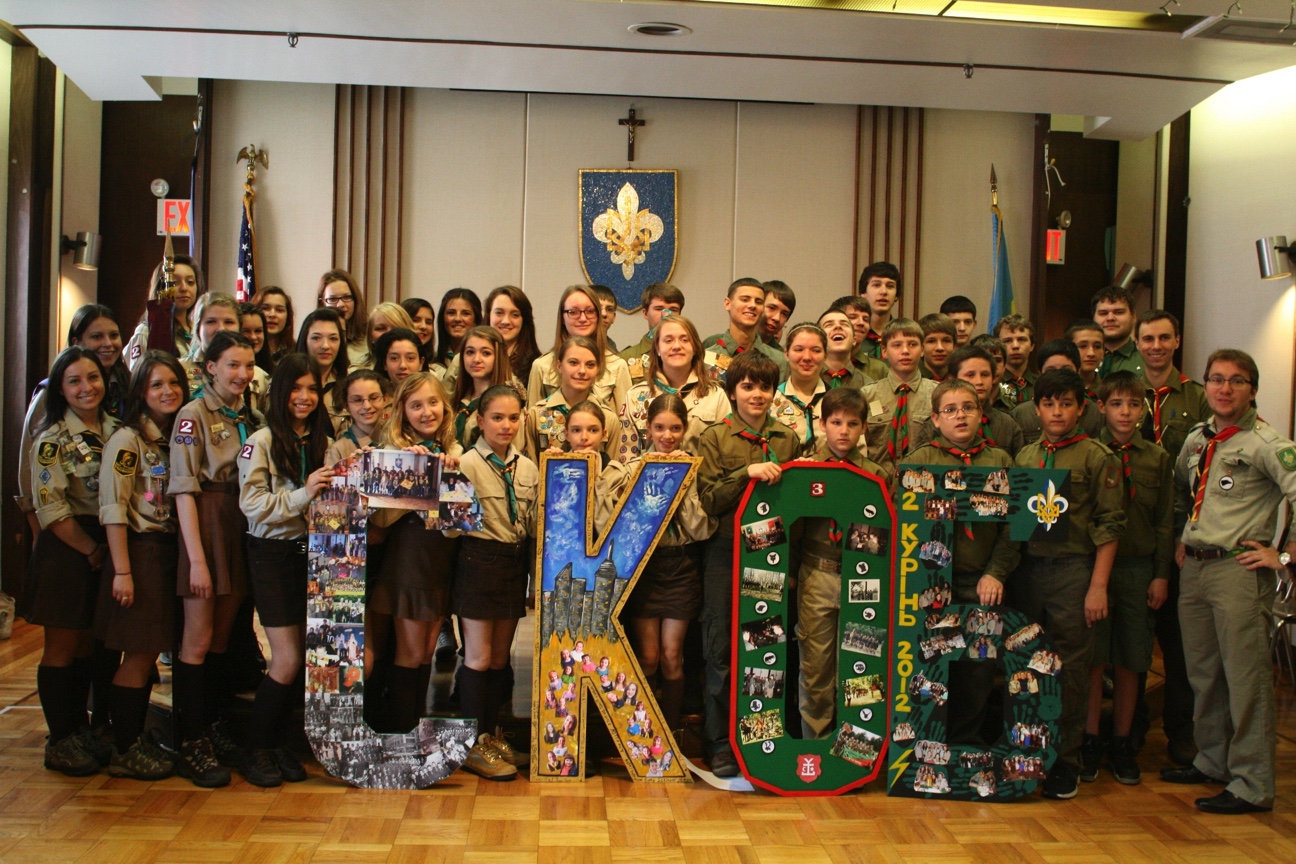
When schools across the country shut down last year and transitioned to virtual learning, Ivan Makar discovered that enrollment at his Saturday Ukrainian language school had dropped from 260 students to 80.
But Makar said it never crossed his mind that the school wouldn’t make it. It had to.
Makar carries a torch that was lit by his grandparents and hundreds of other Ukrainian immigrants over 70 years ago. In 1949, they opened the Self-Reliance Saturday Ukrainian School, in the East Village, to preserve two things that they had to fight fiercely to keep: their language and their culture. The school is one of the oldest Ukrainian language schools in the country.
“Our goal is to give our children a love for the Ukrainian culture, for the language, for the tradition within the American culture,” Makar said.
The language school and three other Saturday Ukrainian programs—a children’s scout group, a dance school and a chorus—have been crucial vehicles for sharing community and cultural identity over the past decades. For generations, parents have followed the weekly routine of these activities to help their children learn the language and foster a deeper connection with the Ukrainian diaspora.
This September, the four programs reopened for in-person learning, and while some families have not returned, enrollment is bouncing back, doubling since the lockdown. Many parents and grandparents are keeping the Saturday tradition alive, because they believe the survival of these programs is vital to the survival of their community.
The Saturday Schedule
The East Village used to be home to tens of thousands of Ukrainian immigrants, but the Census Bureau estimates that fewer than 400 Ukrainian-born residents live there now. So during the week, Ukrainian-related activities in the neighborhood are relatively quiet.
Saturdays are another story.
Ukrainian families from Brooklyn, Queens, Staten Island, New Jersey, Westchester and a few as far away as Long Island or Connecticut commute to the East Village each Saturday for the all-day affair.
The morning begins with the language school, where nearly 200 children from pre-K through 11th grade practice speaking Ukrainian while learning the country’s history, literature, and music. Then around lunchtime, parents and teenage volunteers walk the kids to the scouting program, known as “Plast.” There, students learn about the country’s culture and values—like self-reliance and self-education—through memorizing poetry, playing games and earning merit badges.

In the late afternoon, about a third of the families walk several blocks to traditional Ukrainian folk-dance classes. And in the evening, the final stop is Dumka, a children’s chorus, which rehearses Ukrainian songs in the basement of the language school.
“It’s a lot of work,” said Mariana Shpyrka, a mother of two teenagers, ages 16 and 14. “It’s the entire day on Saturday that you’re just here, walking from building to building.”
Nearly every Saturday for the past eight years, she has driven her children and her neighbors’ children from Brooklyn to the East Village, that is, until the lockdown. Now, this fall, after a year and a half of Zoom dance lessons and virtual language school classes, she and her kids are thrilled to finally be meeting in person again.
Shpyrka said while the young people are at school, parents socialize or catch up on some shopping while they are in Manhattan. A favorite stop is J. Baczynsky, the Ukrainian meat market just a couple of blocks away, where they can find staples like kielbasa, pierogi, stuffed cabbage and cheese babka.
Her children’s first language is Ukrainian, and she feels it’s important for them to maintain their fluency. They’ve also made close friends with other Ukrainian children who have been attending since they were in grade school.
Shpyrka is one of the dozens of community members that keep Saturdays in this Ukrainian pocket of the East Village running. She volunteers as a leader with the scout group. She said she and other parents will often help out in smaller ways too, whether that’s buying pizza for kids who forgot their lunch or walking someone’s child from the scouts program to dance, so the parents can run errands.
“We want to make sure that there is support, and that it doesn’t fall apart,” she said, adding that if the Saturday programs in the East Village closed, “I think our Ukrainian community would fall apart.” Without Saturdays, she fears the younger generation won’t connect with other Ukrainians and won’t pass the culture onto their own children.
Consistency in a chaotic world
On Saturday afternoons, families head to the dance studios near Cooper Square. There, children contentedly pirouette or leap across the dance floor as they wait for lessons to begin. A pair of boys practice squatting and clapping under their legs, a traditional Ukrainian folk-dance step called “prysyadka.”
One recent Saturday, Dianna Shmerykowsky brought her class to order and had the young dancers start at first position.
“I’ve done this since I was a child,” she said. “I’m just like many of the kids we have now.” As a child, Shmerykowsky would travel from Queens each weekend to attend the language school, scouts and dance, something her Ukrainian immigrant parents had wanted her to do to keep their culture and traditions alive. She fell in love with it, and now, for the past 10 years, she has worked as an instructor at the dance school and also volunteers as a scout troop leader.
“Plast [Scouts] and Ukrainian dancing have been the core of my personal life and being,” she said, noting that her closest and longest friendships were formed there.
The dance school, named Roma Pryma Bohachevsky, was hit particularly hard by the pandemic, losing nearly half of the 130 students who attended before the lockdown.
The school’s administrator said this is partially due to families being concerned about virus transmission, but also because some parents have been uncomfortable with the studio’s vaccination requirement for children 12 and older. While the school’s finances are tight with fewer students paying tuition, school leaders are determined to remain open. They’re even exploring new ways of expanding access to dance lessons by allowing families around the country to join over Zoom.
“We live in a very chaotic world. The kids, the parents are dealing with so much,” the dance teacher, Shmerykowsky, said. “The fact that these kids have something that they can return to, this consistency is something that they have as a stepping stone to find normalcy. They know that this is going to be there for them as a support system.”
Daniel Shpyrka, a 16 year-old who’s been attending the Ukrainian schools for half of his life, is one of the beneficiaries of that support system.
He said he is grateful for the Saturday routine and the friendships it has yielded, but he did not always see it that way. As a kid, he often considered the Ukrainian schools as a chore, and wished he had Saturdays for himself, like his non-Ukrainian friends did.
“When I was younger, I didn’t truly understand it, but now as I get older, I understand the true meaning. Not everyone knows their own history,” he said.
These days, Shpyrka no longer resents his Ukrainian education; instead, he’s diving into it even more. He’s continuing at the language and dance schools and volunteers as a scout counselor and dance instructor, and he envisions himself bringing his own children to the East Village each Saturday.
“I realized that these people are important to me,” he said. “And I know that we will be together for my whole life.”
To say out loud, ‘I am Ukrainian.’
Christina Pikhmanets immigrated to the U.S. from Ukraine 13 years ago, when she was in her twenties. “Staying in the Ukrainian community gives me this comfort,” she said. “I’m away from home, but [here] I still have home away from home.”
She is the director of the Saturday language school and has a master’s degree in linguistics from the oldest university in Ukraine, founded in 1661. She thinks that in addition to preserving the community, preserving the Ukrainian language and culture is a matter of life and death.
Her grandparents had survived the Holodomor, Stalin’s manufactured famine that starved millions of Ukrainians in an effort to wipe out Ukrainian identity and resistance. Her grandmother had been deported to a forced labor camp in Siberia and later raised her children in a time when speaking Ukrainian instead of Russian could draw the attention of the KGB.
Many Ukrainians share a family history similar to Pikhmanets’ — one of intimidation, displacement and even death as part of Stalin’s brutal efforts to Russify Ukraine.
“During the 1930s, millions of Ukrainians stopped speaking the language and practicing the culture,” said Alexander Motyl, a political science scholar who has written extensively about Soviet Ukraine. “Speaking the language publicly was considered in opposition to Stalin.”
Pikhmanets said she remembers the moment her family learned of Ukraine’s independence in 1991. She was 9. She said her grandmother started crying and said, “Now we can be who we are.”
“So, for us, to preserve our identity, to say out loud, ‘I’m Ukrainian. My language is Ukrainian,’ is very important,” Pikhmanets said. “This is the driving force that helps us keep the school together.”
She said it is also what motivates so many parents to leave their homes on what would otherwise be a free Saturday and make the trek to the East Village, “just to be in the community and to hold on to our heritage.”
Correction: This story was updated to correct the number of years that Dianna Shmerykowsky has been a dance instructor.
About the author(s)
Shelby Jouppi is a freelance reporter and multimedia specialist currently pursuing a master’s in data journalism at Columbia University.



